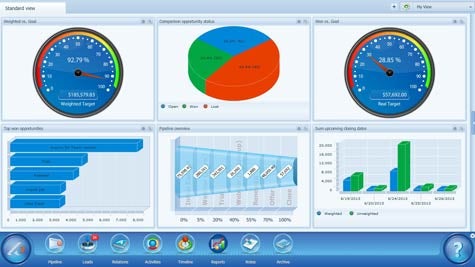One of the biggest challenges with customer relationship management (CRM) software even to this day is getting salespeople to actually enter data. CRM offers a lot of benefits to managers who are looking for more visibility into the sales process. But for the average salesperson, CRM software is often viewed as a data entry chore that doesn’t do much for them.
With that issue in mind, Pipelinersales developed a CRM application that makes it a lot easier for both salespeople and management to visualize their sales pipelines using graphical tools that are built into the application. According to Pipelinersales CEO Nikolaus Kimla, rather than turning the salesforce into a bunch of data collectors, the goal of the CRM application should be to first make it easier for salespeople to view their sales pipeline and manage their accounts. Only then, says Kimla, will they take the time and trouble required to enter data in the CRM application.
Version 5.2 of the company’s namesake CRM application adds automatic update capabilities that not only can be used to automatically synchronize data in real time across PCs and Macs and then back it up, it can be used by the IT organization to make sure every user is on the same version of the application. The end goal, says Kimla, is to collect CRM data in a way such that the process is as transparent to the salesperson as possible, thereby liberating the salesperson from the sense of drudgery often associated with other CRM applications.
With more businesses than ever relying on the data in CRM systems rather than traditional financial applications to run the business on a daily basis, CRM applications have become mission critical. The problem is that if the people being asked to enter the data in that system don’t see any tangible benefit from performing the task, that function starts to drop on their list of priorities. The end result is that instead of having more visibility into the sales pipeline, the sales manager winds up being little better off than when they relied on spreadsheets to collect that same data.
While there’s a tendency to think of salespeople as just another type of employee, the fact is that many of them own relationships with customers. When they leave, all too often the customer leaves with them. That means, like it or not, the relationship between a company and its salespeople often resembles more of a social compact than a traditional contractual relationship. If the company makes it as easy as possible for the salesperson to sell, that salesperson is going to want to stick around.



